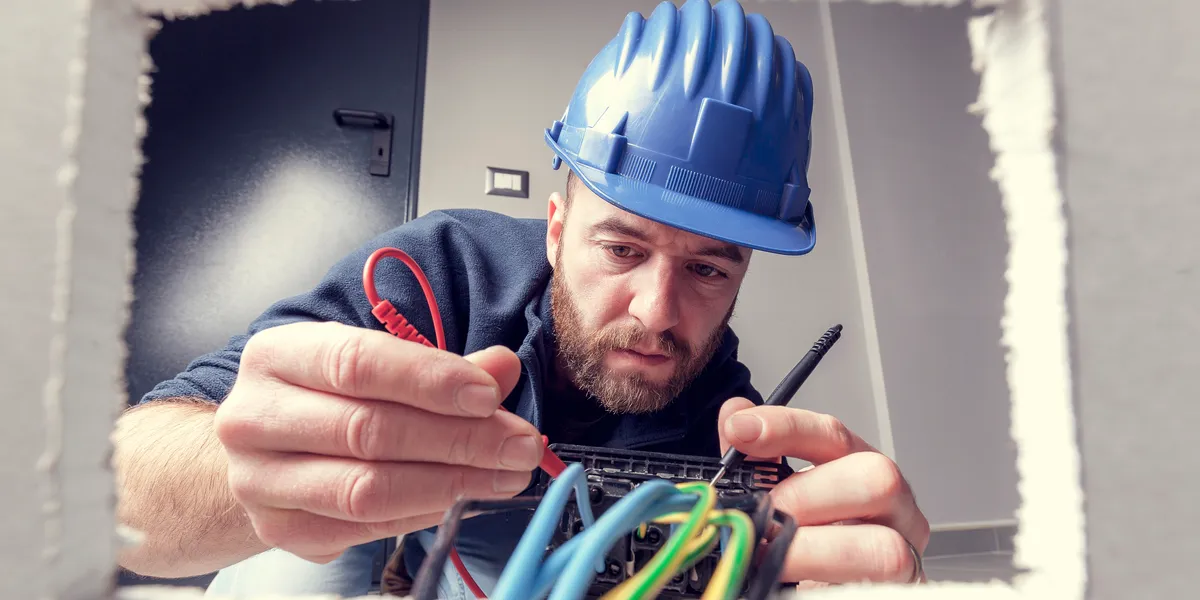Confined space training is an important part of working in the industrial and construction sectors. A confined space refers to any location that has limited entry and exit points, as well as large machinery or other obstacles that take up a lot of the available space. Confined spaces are typically not made for humans to inhabit, though they often have to be accessed by workers in order to fix machinery or complete other necessary tasks.
Confined spaces can be particularly dangerous due to a number of conditions associated with them, such as low visibility, reduced oxygen levels (making them more flammable), and high noise levels (which can be difficult to hear over). To protect these workers from injury or death while on the job, it’s important that they receive proper training before entering a confined space.
What is a confined space?
A confined space is any area within a structure or facility that is large enough for a worker to enter, but is not designed for continuous occupancy.
Confinement space environments can be man-made (e.g., tanks, silos) or natural (e.g., caves). Confined spaces can also include underground vaults and pits; ships and barges; aircraft hangars; storage bins; sewers and storm drains; tunnels; elevator shafts; utility vaults/manholes/crawl spaces.
It’s important to note that not all confined spaces are hazardous or even dangerous—they just aren’t designed for humans to spend time in them!
Who works in confined spaces?
· Construction workers
· Electrical workers
· Plumbers, pipefitters and steamfitters
· Carpenters
· Mechanics and repair technicians (some)
· Oil-and-gas workers
· Roofers
· Painters and decorators (some)
· Refrigeration mechanics (some)
· Refuse collectors/collector drivers
Why do you need training for confined spaces?
Confined spaces are a staple in many industries, and they can pose serious risks if not properly handled. Because of this, OSHA regulations state that an employee must have the right training before entering a confined space. Here are some of the reasons why:
· To be safe
· To comply with regulations
· To be more productive
· To be more efficient
· To be more profitable
Safety and compliance
Confined spaces are inherently dangerous. They pose a multitude of hazards, including:
· Lack of oxygen
· Lack of light and visibility
· Electrical hazards
· Physical dangers, such as falling or being crushed by equipment or machinery.
Because of the inherent risks, OSHA regulations require employers to provide training for anyone working in a confined space. This includes anyone entering the space and anyone who is responsible for shutting down the operations within it. In addition to this initial training, there are additional requirements for those who work in confined spaces frequently or those who work in particularly dangerous areas (such as those containing flammable gasses).
Support your workers
We can really conclude that confined space training is essential to ensuring that workers are equipped with the tools they need to do their job safely. If you don’t provide this training, then your company can be held liable for any accidents that occur because of unsafe working conditions. Your workers should always be given adequate information about how to enter and exit a confined space, as well as how to identify hazards in these environments.
You should also provide support for your employees through regular inspections of confined spaces, which will help you catch any safety problems before they become serious issues.
Work can be more productive when done safely
It’s no surprise that safe work practices are more productive. When everyone on the team is doing their job safely, everyone can focus on getting work done. A good example of this is in construction projects: if you aren’t careful about safety, you risk injury and damage to equipment; but if you take the time to ensure that your workers are trained in confined space entry procedures and trained in other areas of safety management, they’ll be able to get their job done without jeopardizing themselves or others.
Another benefit of workplace training programs is their positive impact on workplace morale and productivity. By showing your employees that their employer cares about them as people—and isn’t just concerned with making money off them—you will reinforce an atmosphere where employees feel valued by their employer and therefore more likely to put forth additional effort toward helping the company succeed.
Confined spaces are dangerous but not impossible to work in safely.
You may be thinking, “Why do I need to provide confined space training?” Confined spaces are dangerous but not impossible to work in safely. In fact, with proper training and equipment on hand, workers can perform their jobs more productively and safely.
The answer lies in the definition of a confined space: an enclosed area with limited means of entry or exit that contains a hazardous atmosphere (e.g., flammable gas) or material (e.g., asbestos). Confined spaces include tanks, vats, silos, manholes and pits—basically any small area where employees have little room to move around and must depend on other tools for their work. This makes it crucial for employees who work in these areas to receive proper training before entering them so they can ensure their own safety along with the integrity of your facility’s operations.
Safe and productive work begins with a proper understanding of the dangers involved. With an awareness of how to stay safe, workers can work in these spaces without fear and perform their jobs effectively. This means not only learning about the risks but also knowing how to create an environment that supports each worker’s needs.
Nobody should be afraid of doing their job safely or effectively. By providing proper training for employees working in confined spaces, you can ensure that everyone is safe and ready for any situation that might arise.












